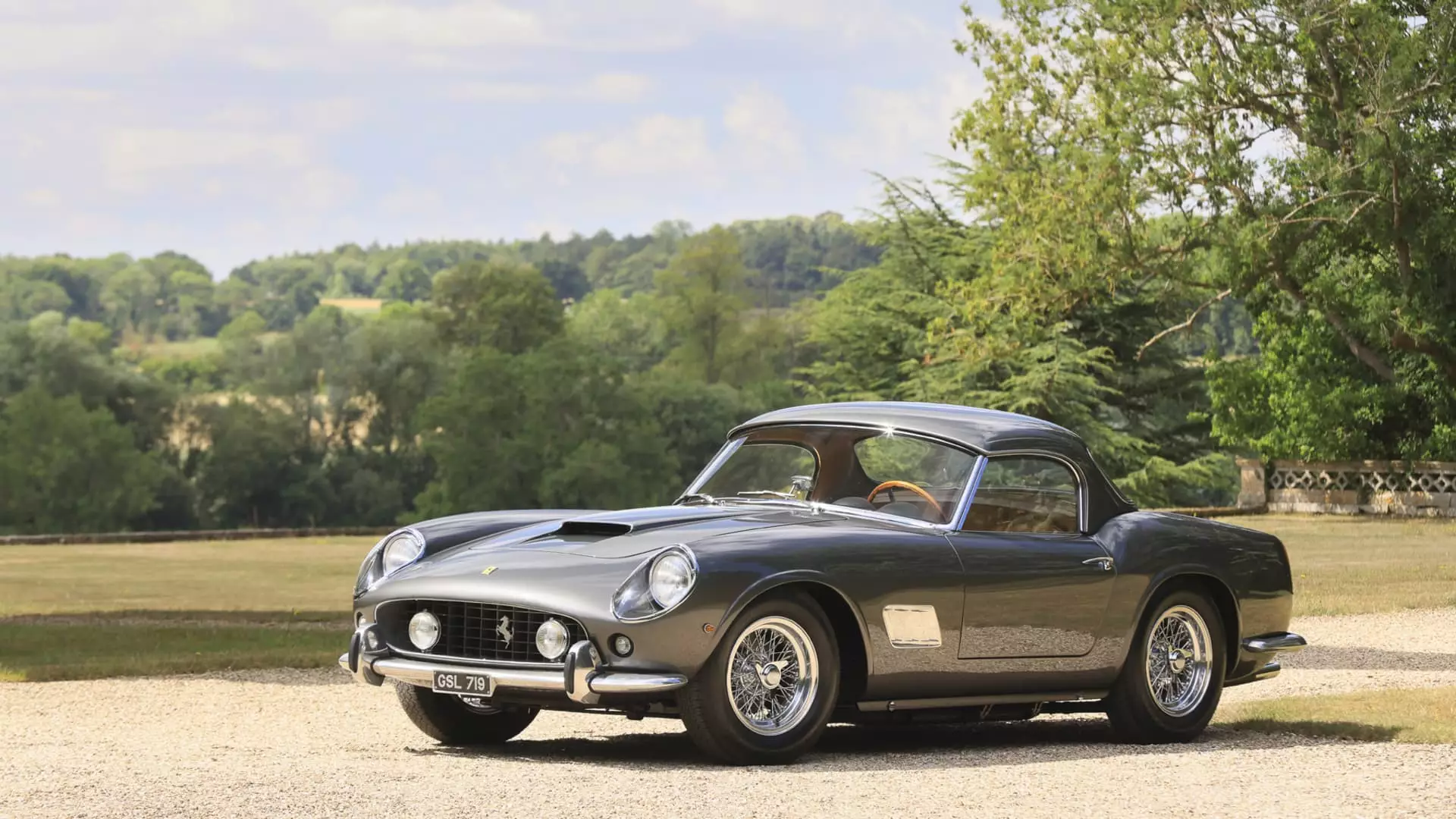For decades, classic cars have stood as symbols of wealth, exclusivity, and nostalgia. These gleaming relics of a bygone era often embodied status and timeless craftsmanship, making them prime targets for investment during economic booms. However, recent market trends suggest that this once-thriving segment is facing an unsettling decline—not merely a blip but possibly the beginning of a fundamental transformation. The dramatic drop in auction sales at Monterey Car Week vividly illustrates this seismic shift. Once boasting numerous high-priced vehicles surpassing the $10 million mark, this year’s event features only a fraction of that elite level, hinting at a broader contraction.
While collectors and investors typically read auction results as a market health indicator, the current decline exposes deeper issues rooted in shifting cultural values, generational change, and economic realities. It becomes increasingly clear that the traditional allure of classic cars as coveted investment assets is waning, raising questions about the sustainability of this market and whether it merely reflects a temporary downturn or signals a more profound societal transformation.
Economic Turmoil: The Catalyst or the Aftershock?
The economic environment plays a substantial role in tempering enthusiasm for collectible cars. With global instability—from geopolitical conflicts in Ukraine and the Middle East to economic slowdowns in China—high-net-worth individuals are becoming more cautious. Rising interest rates compound this hesitance by making borrowing more expensive and elevating the opportunity cost of tying up capital in assets that are, after all, luxury collectibles.
Furthermore, the surging strength of the stock market over recent years has diverted some attention away from collectibles, which are viewed as less liquid and more volatile. For the wealthy who can diversify their portfolios with stocks and real estate, the allure of tangible assets like classic cars diminishes. If cash and equities continue to outperform, the incentive to invest heavily in aging automobiles diminishes, reflecting a rational shift rather than a speculative collapse.
Yet, crucially, these macroeconomic factors may only serve as a cover for the more insidious force underpinning the decline: a generational transformation in taste, values, and consumption patterns.
A Changing of the Guard: Generational Dynamics and Cultural Shifts
At the heart of the market’s downturn lies a profound cultural pivot. Baby boomers, who have historically been the backbone of the classic car market, are aging and increasingly reluctant to hold onto their collections. Many are eager to pass on, downsize, or sell their prized possessions, often at prices much lower than previous peaks. This exodus is not only driven by age but also by a fundamental change in what drivers and collectors find meaningful.
Millennials and Generation Z are stepping into wealth in an entirely different cultural landscape. Their values emphasize technological integration, sustainability, and practicality over nostalgia for vintage machinery. Instead of hunting for rare Ferraris or classic American muscle cars, they prefer more recent, more reliable vehicles—things they can use daily. This shift in appetite not only depresses prices for older models but also redirects collecting efforts toward more contemporary and arguably more disposable assets.
The infusion of trillions of dollars passing between generations might eventually stabilize the market—if new collectors find a different set of values. But for now, the old guard’s retreat leaves a power vacuum that the younger cohort isn’t yet eager to fill, often content to watch prices fall and opportunities emerge to buy modern exotics at a discount.
Market Fragmentation: From Old Paradigms to New Realities
The classic car market’s fragmentation reflects broader societal changes. The once cohesive community of enthusiasts, driven by shared nostalgia and passion, now finds itself divided. A significant portion of older collectors retreats from the public eye, opting for private sales rather than attending large auctions where prices have significantly declined. The trend toward private transactions suggests a reluctance to accept or broadcast lower valuations, highlighting a deeper discomfort with declining prestige or ego bruising associated with falling prices.
Simultaneously, the market for modern supercars experiences boom-like dynamics. Younger buyers, eager for speed and status, are pushing prices on late-model Ferraris, Porsches, and boutique brands like RUF through the roof. Rare and highly specific cars from the 1980s and beyond now fetch record prices, overshadowing the nostalgic (if declining) appeal of the vintage era.
However, this new buying frenzy carries its own risks. The modern supercar segment seems increasingly speculative, with prices driven more by FOMO and momentum rather than intrinsic value. As Kidston notes, if the trend becomes purely superficial, reducing collecting to a mere financial game, the passion that once defined the hobby risks being overshadowed by greed. In that light, the decline isn’t just a market correction but possibly an overdue wake-up call—a reminder that the soul of collecting should transcend mere investment.
The Future of Collectibles: Reimagining Value and Passion
In this evolving landscape, the traditional definition of value is being challenged. As prices for vintage cars fall and younger collectors prefer more accessible, everyday vehicles, the cultural meaning of “collecting” itself shifts. The market’s decline may be less a sign of failure than an invitation to rethink what makes collecting meaningful—whether it’s history, craftsmanship, or personal joy.
The current downturn might catalyze a broader reconsideration within the luxury and collectible spaces, emphasizing responsibility, authenticity, and sustainability. If the market’s collapse at the high end trades caution for reflection, perhaps it signals the dawn of a new era—one where passion, authenticity, and cultural relevance trump superficial wealth displays.
Yet, without a clear and compelling narrative that resonates with the next generation—an authentic story that aligns with contemporary values—the market risks further fragmentation. Unless collectors begin to see value beyond monetary gains, the decline could deepen, leaving a niche community struggling to find relevance in a rapidly changing world.

